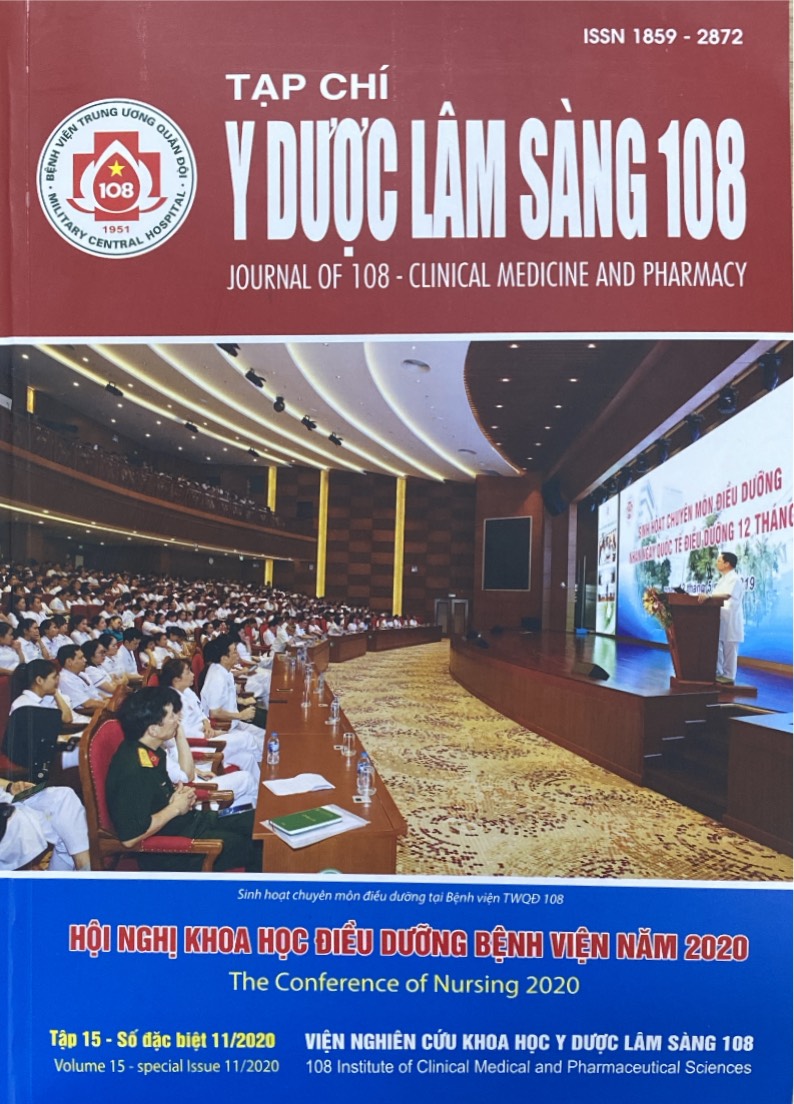Nutrition risk screening in the Intensive Care Unit by NRS 2002 and NUTRIC tools
Main Article Content
Keywords
Abstract
Objective: To screen the nutrition risk of critical ill patients in 108 Military Central Hospital by Nutritional Risk Screening 2002 (NRS 2002) and Nutritional Risk in the Critical Ill (NUTRIC) tools and compare the equivalence between the two scores in detecting patients with nutritional risk in the ICU. Subject and method: A prospective descriptive study was conducted in the Intensive Care Unit in 108 Military Central Hospital from June to August, 2020. 105 adult patients who were screened nutritional risk by both NUTRIC and NRS 2002 were included. Result: 54 (51.4%) patients were identified high nutrition risk by NRS 2002, while only 29 (27.6%) patients was classified similarly by NUTRIC. The comparison between both nutrition screening tools showed fair agreement (κ = 0.31). Conclusion: NUTRIC và NRS 2002 are only fair equivalent for nutritional risk screening in the ICU. Larger studies may help evaluate whether the tool is better at identifying in nutritrion risk in ICU.
Article Details
References
2. Kondrup J, Allison SP, Elia M, Vellas B, Plauth M (2002) Educational and clinical practice committee, european society of parenteral and enteral nutrition (ESPEN) ESPEN guidelines for nutrition screening. Clin Nutr 22(4): 415-421.
3. Lew CC Yandell R, Fraser RJ, Chua AP, Chong MF, Miller M (2017) Association between malnutrition and clinical outcomes in the intensive care unit: A systematic review. J Parenter Enteral Nutr: 744-758.
4. Lew CCH et al (2017) Association between malnutrition and clinical outcomes in the intensive care unit: a systematic review [Formula: see text]. Jpen J Parenter Enteral Nutr 41(5): 744-758.
5. Mariane Kubiszewski Coruja R, Yasmini Cobalchini (2019) Nutrition risk screening in intensive care units: Agreement between NUTRIC and NRS 2002 Tools. Nutrition in Clinical Practice: 1-5.
6. McClave SA et al (2016) Guidelines for the Provision and assessment of nutrition support therapy in the adult critically Ill patient: Society of critical care medicine (SCCM) and American Society for Parenteral and Enteral Nutrition (A.S.P.E.N.). Journal of Parenteral and Enteral Nutrition 40(2): 159-211.
7. Pierre Singer a Annika Reintam Blaser et al (2019) ESPEN guideline on clinical nutrition in the intensive care unit. Clinical Nutrition 38: 48-79.
8. Rahman A, Hasan RM, Agarwala R, Martin C, Day AG, Heyland DK (2016) Identifying critically-ill patients who will benefit most from nutritional therapy: Further validation of the “modified NUTRIC” nutritional risk assessment tool. Clin Nutr 35(1): 158-162.
9. Sanjith Saseedharan (2019) Comparison of Nutric score, nutritional Risk Screening (NRS) 2002 and subjective global assessment (SGA) in the ICU: A cohort study. J Nutrition Health Food Sci 7(4): 1-4.
 ISSN: 1859 - 2872
ISSN: 1859 - 2872
